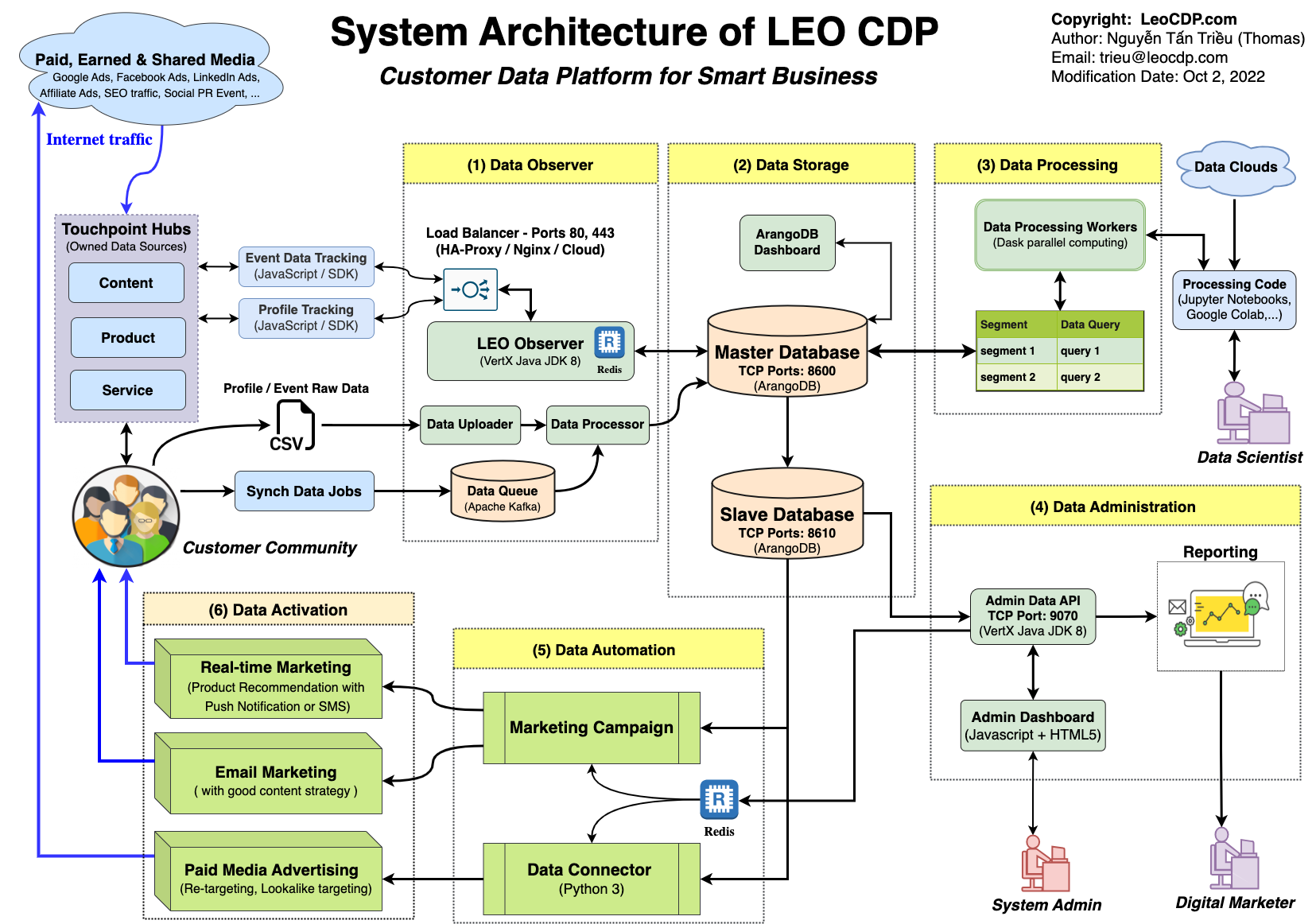What is a Customer Data Platform (CDP) ?
A Customer Data Platform (CDP) is a type of software platform designed to collect, integrate, and manage customer data from various sources to create unified customer profiles. The main goal of a CDP is to provide a comprehensive and centralized view of customer data, allowing businesses to better understand their customers and deliver personalized and targeted marketing campaigns.
Key characteristics of a Customer Data Platform include:
1. Data Integration: CDPs can collect data from multiple sources, such as websites, mobile apps, CRM systems, transactional databases, social media, email interactions, and more. They are capable of ingesting both structured and unstructured data.
2. Unified Customer Profiles: The CDP creates individual customer profiles by aggregating and organizing data from various touchpoints. These profiles include behavioral data, preferences, purchase history, demographic information, and other relevant data points.
3. Real-time Data Processing: Many CDPs can process data in real-time or near-real-time, ensuring that customer profiles remain up-to-date and accurate as new data becomes available.
4. Data Segmentation and Analysis: CDPs enable businesses to segment customers based on various attributes and behaviors. This segmentation allows for more targeted and personalized marketing efforts and customer experiences.
5. Data Activation: CDPs can connect with other marketing and customer engagement tools, such as email marketing platforms, advertising networks, and customer support systems, to activate customer data and deliver personalized experiences across various channels.
6. Compliance and Privacy: CDPs often include features to ensure compliance with data privacy regulations like GDPR (General Data Protection Regulation) and CCPA (California Consumer Privacy Act) to protect customer data and maintain trust.
CDPs play a crucial role in helping businesses enhance their customer experiences, drive customer engagement, and optimize marketing efforts. By leveraging a CDP, organizations can gain valuable insights into customer behavior and preferences, leading to more effective marketing strategies and improved customer loyalty.
What is Customer Data Platform architecture ?
The architecture of a Customer Data Platform (CDP) typically consists of several components that work together to collect, process, unify, and activate customer data. The specific architecture can vary based on the CDP provider and the needs of the business, but here are the common components found in a CDP architecture:
1. Data Collection: This component is responsible for gathering data from various sources, such as websites, mobile apps, CRM systems, social media, offline stores, and other touchpoints. Data collection may involve the use of APIs, SDKs (Software Development Kits), webhooks, batch uploads, or direct integrations with data sources.
2. Data Ingestion: Once the data is collected, it goes through the data ingestion process. This process involves transforming the data into a standardized format and loading it into the CDP's storage system. Data ingestion may also include data cleansing and enrichment to ensure data quality.
3. Data Storage: The CDP needs a storage system capable of handling large volumes of data and maintaining a unified customer database. Depending on the CDP's architecture, this storage may be based on a relational database, NoSQL database, data lake, or a combination of multiple storage technologies.
4. Data Unification: One of the primary functions of a CDP is to create unified customer profiles by combining data from different sources related to the same individual or entity. This process involves data matching, identity resolution, and entity stitching to link data points to specific customers.
5. Customer Identity Management: CDPs often have a customer identity management component that helps manage customer identifiers, such as email addresses, user IDs, or device IDs. This ensures that data from different sources can be linked to the correct customer profiles.
6. Real-time Processing: Some CDPs support real-time data processing, allowing for immediate updates to customer profiles as new data is received. Real-time processing can be essential for delivering timely and personalized customer experiences.
7. Data Segmentation and Analytics: The CDP architecture may include capabilities for segmenting customers based on their attributes and behaviors. It also provides analytical tools to gain insights from customer data, such as identifying trends, preferences, and opportunities for targeted marketing campaigns.
8. Data Activation: Once customer data is unified and segmented, the CDP can activate this data for use in marketing campaigns, personalized messaging, ad targeting, email campaigns, and other customer engagement activities. Integration with various marketing tools and platforms facilitates this data activation.
9. Security and Privacy: A robust CDP architecture includes features to ensure data security and compliance with privacy regulations. This may involve data encryption, access controls, auditing, and tools to manage customer consent and data preferences.
10. Reporting and Visualization: Many CDPs offer reporting and visualization capabilities to help users understand customer data trends, campaign performance, and other key metrics. Dashboards and reporting tools make it easier for business stakeholders to make data-driven decisions.
Overall, the architecture of a CDP is designed to streamline the collection, management, and activation of customer data, empowering businesses to deliver personalized and targeted customer experiences.
.png)
